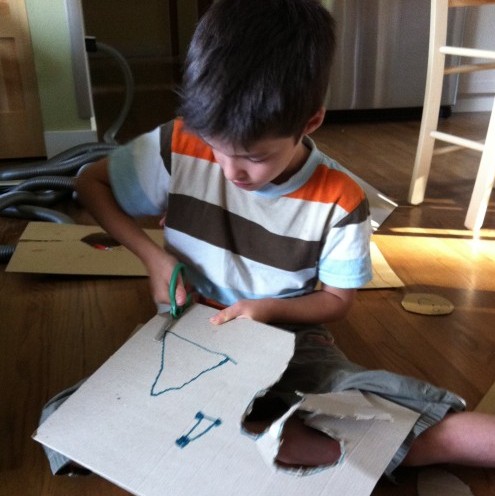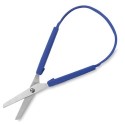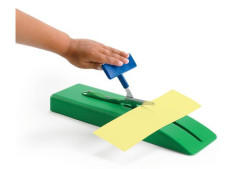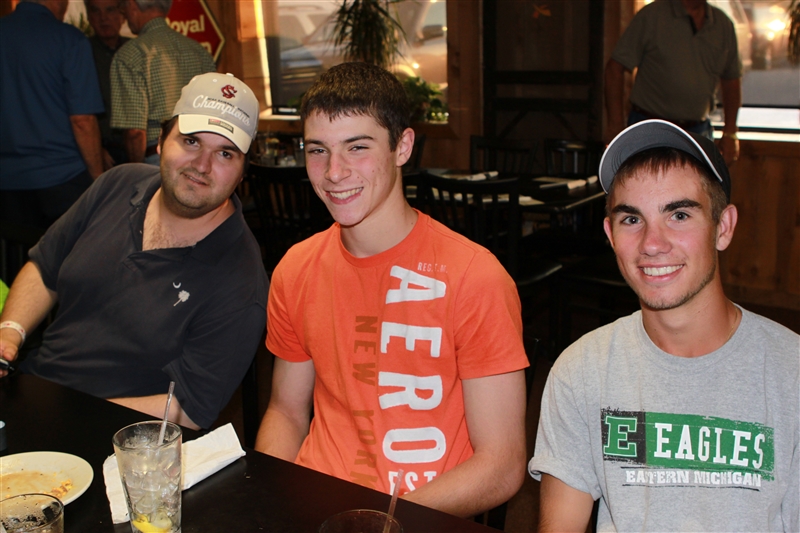 Before you read the tips, ask yourself these questions: How important is it to learn to precisely learn to use scissors? Would your child’s time be better spent learning something else? How often do adults cut around items on paper?
Before you read the tips, ask yourself these questions: How important is it to learn to precisely learn to use scissors? Would your child’s time be better spent learning something else? How often do adults cut around items on paper?
Choose the correct scissors for cutting with one hand
Children with hemiplegia may need special or adaptive scissors to start, though many are able to progress to regular scissors over time. There are various types of adaptive scissors that work well for children with hemiplegia.
Pressure or spring-assisted scissors (these spring back open on their own – easier for kids who have fine motor issues)
Looped scissors
Use mounted tabletop scissors
Use left-handed scissors for left-handed children
Find a variety of specialized scissors
Start with the Easy Stuff
- Snipping several colorful straws into small pieces
- Thread a colorful piece of string or yarn through the pieces to make a bracelet or necklace
- Once she has mastered snipping, offer her one-inch-wide strips of card stock, construction paper, or old file folders. The firmness of these materials makes cutting easier for a beginner because the paper doesn’t flop around and the short width of the paper allows for cutting the strips in half with one snip
- Snip scrap pieces of colored paper into small pieces to make leaves for a tree or sprinkles for an ice cream cone picture
- Have your child attempt to snip sequentially by cutting across a 4-inch piece of paper and progressing to an 8-inch piece
- Cutting lines should be thick and bold in the beginning; as your child’s skills improve, progress to thinner lines
- If your child has difficulty staying on the lines while cutting, make a practice sheet by outlining the cutting line with two thin strips of school glue. Once the glue dries, have your child cut on the line between the ridges of glue. If he veers off of the line, he will feel a bump as he cuts across the glue strip. After completing several practice sheets, the sensory feedback should help him understand how to stay on the lines.
- Don’t worry if your child is a messy cutter at first. Kids progress at their own pace.
- Practice, practice, practice (if this is really important to you – otherwise, urge your child to use her time to develop more useful skills like spreading peanut butter on bread)
Holding the Paper with One Hand
- Some children lay the paper on the table and use their affected arm to hold it down, then cut
- Add a clamp to the table and clamp the paper, then move the body to cut instead of moving the paper
- Large clothes pin clip, about 8×2, to hold the paper so the child can rotate it
- Clipboard to hold paper
Stress Scissor Safety
Scissor safety is critical and should always be emphasized at the beginning of each cutting activity.
- Scissors are only for cutting paper. Nothing else! (This includes shirts, crayons, fingers, hair, and lips.) If a child feels the need to cut something other than paper, he loses the privilege of having scissors until he is ready for another chance. If the problem happens again, the scissors are taken away.
- Avoid walking with scissors. Discourage children from walking around the classroom while holding scissors. On the rare occasion that they must do so, the students know the proper way to hold them is with the blades closed, gripping the blade end in the hand, forming a fist around the blades, and leaving the handles exposed. The scissors should be held close to one’s side when walking. By following this rule, there is no risk of children walking around while opening and closing the blades.
Work on Fine Motor Skills First
Before teaching your child to use scissors, have him participate in some fun activities that will strengthen his hand and finger muscles and improve bilateral coordination. Jump-start his fine motor skills with these activities:
- Use kitchen tongs to stack small blocks or to move cotton balls from one container to another
- Tear paper into small pieces to improve the ability to use both hands in a coordinated manner
- Spin a top to exercise the muscles in the thumb, index, and middle finger
- Punch holes on index cards with a handheld puncher to strengthen the hand muscles and improve bilateral skills
- Squeeze water out of squirt-toys in the bathtub so hand muscles get a workout
- Use an eye dropper filled with watercolor paints to challenge fine motor skill
- Finger puppet play is entertaining and addresses finger isolation and dexterity
- Place clothespins or kitchen clips on the edge of a paper plate to strengthen small hand and finger muscles and encourage bilateral skills
Adjust the IEP
- IEP should state that there is no penalty for slow cutting or for messy cutting
- You or your child may decide that this task is just not that important and if so, address this in the child’s IEP – “no cutting with scissors; substitute another task like using an iPad” or “practice cutting open food packages or snipping herbs” because that’s pretty much how the adult population uses scissors.
Do you or your child use one hand for most tasks? Join our Facebook group for information and support!










